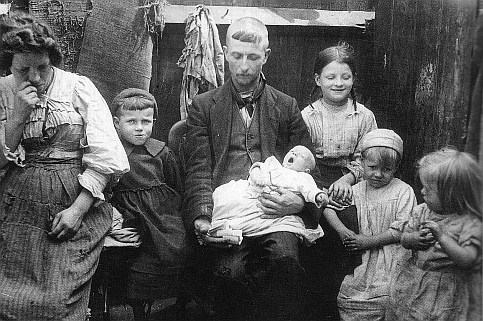Please note that all
extracts included in this blog are with the kind permission of the Chief
Registrar of England and Wales and the Registrar General of Scotland and are copyright protected.
One of the big questions when starting to research your family tree is " what information is there available in the various records?"so this blog is to address this issue.
The first thing you look for when searching for England and Wales entries is the Index. You can search the index for free for entries up to approximately 1960 at www.freebmd.org.uk Here is an example of what the index shows:-
One of the big questions when starting to research your family tree is " what information is there available in the various records?"so this blog is to address this issue.
The first thing you look for when searching for England and Wales entries is the Index. You can search the index for free for entries up to approximately 1960 at www.freebmd.org.uk Here is an example of what the index shows:-
Once you have identified the entry you will have discovered, the area, the volume number and the page number of the entry in the register. This information can be used to purchase a certificate. This can be done online at www.gro.gov.uk or at the registry office where the event was registered.
From the third quarter (Oct, Nov, Dec) of 1911 mother's maiden names started to appear in the Birth Index and the spouse's surname in the Marriage Index.
Below are extracts of certificates which demonstrates the information you can expect to find on them.
Birth certificate for England or Wales
As you can see from the image above the birth certificate contains the following information:-
The number in the register the birth can be found.
The number in the register the birth can be found.
Where and when the birth occurred.
The name, if any, of the child.
The sex of the child.
Name and surname of the father.
Name, surnname and maiden name of the mother
Father's occupation
Signature, description and residence of informant.
Date of when the birth was registered
Signature of Registrar
Name entered after registration (this column is used if the child is unnamed when first registered)
However, Scottish records are different. Here is an extract
Scottish birth certificates have the following information:-
Number on page
Name and Surname
When and Where born, includes the time of birth even when they are not a twin.
Sex
Name, Surname, Rank or Profession of Father, Mother's maiden Surname, Date and place of marriage.
Signature and qualification of the informant and Residence if not in the house that the birth occurred.
When and where registered and signature of Registrar.
Marriage certificate for England or Wales
The marriage certificate as you can see from the extract above contains the following information:-
Where the marriage took place
The number it is in the register
When married
Name and surname of the bride and groom
The happy couples age. Where is says full age means that they have reached the age of or over 21
Condition, if they had been married before it would say widow or divorcee in this column
Rank or profession
Fathers name and Surname
Fathers Rank or profession
Names of witnesses
Signature of the Registrar
Again the Scottish certificates give more information on the Marriage certificates:-
Number on page
When, Where and How married
Signatures of parties, Rank or Profession, Whether single or widowed.
Age
Usual residence
Name, Surname, Rank or Profession of Father, Name and Maiden Surname of Mother
If a regular Marriage, signatures of officiating Minister and witnesses. If irregular Marriage Date of conviction, Decree of Declaration or Sheriff's warrant
When and Where Registered and Signature of Registrar
Death certificate of England or Wales
Where the marriage took place
The number it is in the register
When married
Name and surname of the bride and groom
The happy couples age. Where is says full age means that they have reached the age of or over 21
Condition, if they had been married before it would say widow or divorcee in this column
Rank or profession
Fathers name and Surname
Fathers Rank or profession
Names of witnesses
Signature of the Registrar
Again the Scottish certificates give more information on the Marriage certificates:-
Number on page
When, Where and How married
Signatures of parties, Rank or Profession, Whether single or widowed.
Age
Usual residence
Name, Surname, Rank or Profession of Father, Name and Maiden Surname of Mother
If a regular Marriage, signatures of officiating Minister and witnesses. If irregular Marriage Date of conviction, Decree of Declaration or Sheriff's warrant
When and Where Registered and Signature of Registrar
Death certificate of England or Wales
As you can see from the example above you will discover:-
The number in the register
When and where the deceased died
Name and Surname of the deceased
Sex
Age
Occupation
Cause of death
Signature, description and residence of the informant
When registered
The Registrar
Scottish death certificates again show more information than the English and Wales counterparts.

Number on page
Name, Surname, Rank or Profession and Marital Status
Date, time and place of death
Sex
Age at death
Name, Surname Rank or Profession of Father, Name and Mother's maiden name
Cause of death, duration of the disease and medical attendant by whom certified,
Signature and qualification of the informant and residence. If out of the house at the time of death.
When and where registered and signature of registrar.
Help can be found here:- https://www.facebook.com/GenealogyResearchAssistant






